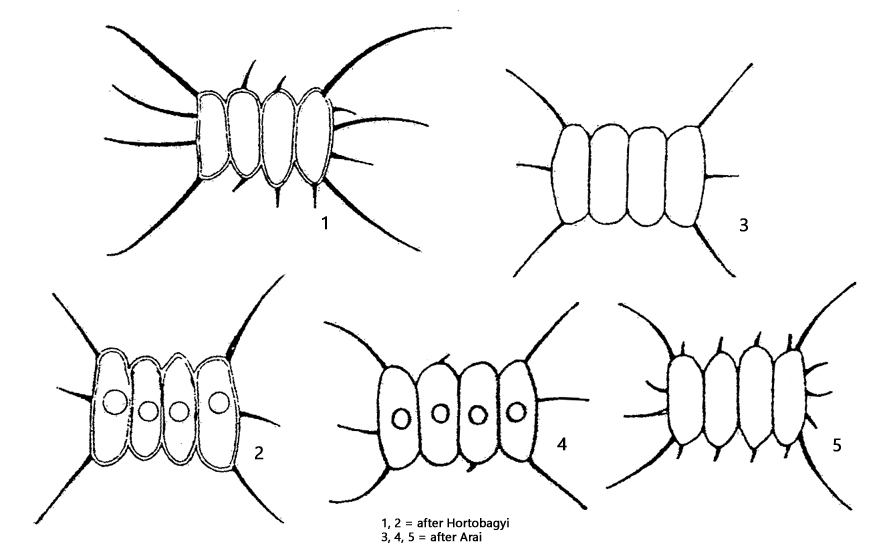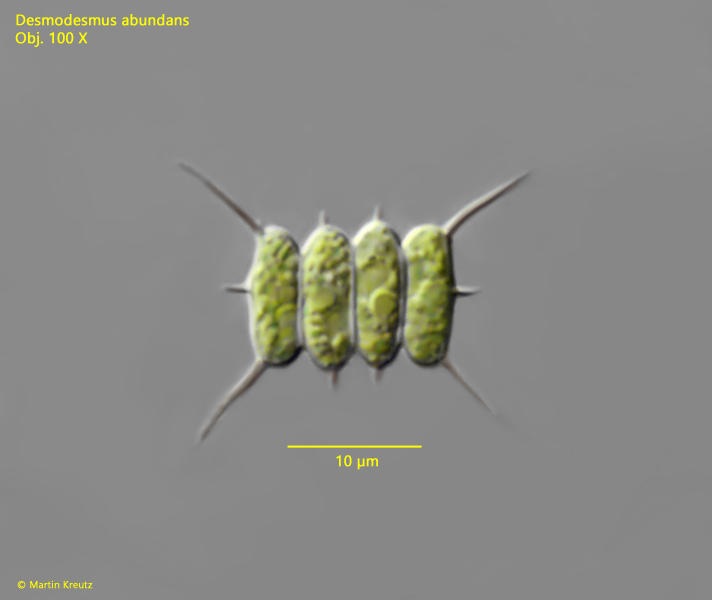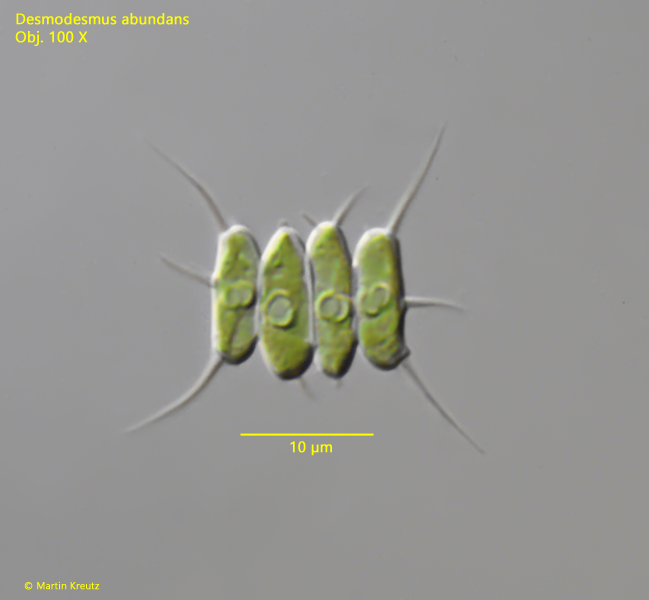Desmodesmus abundans
(Kircher) Hegewald 2000
Most likely ID: n.a.
Synonyms: Scenedesmus sempervirens, Scenedesmus caudatus f. abundans, Scenedesmus quadricauda f. abundans, Scenedesmus caudatus var. abundans, Scenedesmus quadricauda var. abundans, Scenedesmus abundans, Scenedesmus caudatus var. minor, Scenedesmus nanus, Scenedesmus quadrispina, Scenedesmus spinosum f. solutus, Scenedesmus opoliensis var. abundans, Scenedesmus quadricauda var. quadrispina, Scenedesmus quadricauda var. parvus, Scenedesmus rostratospinosus, Scenedesmus parvus, Chlorella fusca, Scenedesmus bellospinosus, Scenedesmus fuscus, Desmodesmus opoliensis var. abundans
Sampling location: Muehlhalden pond, Simmelried
Phylogenetic tree: Desmodesmus adundans
Diagnosis:
- linear coenobia of 2–4–(8) cells, arranged tightly in parallel
cells 5.5–15 µm long, width 1.7–4.5–(7) µm - cells ellipsoid or cylindrically shaped with rounded ends
- inner and outer cells about equal in length
- outer cells slightly convex or straight
- poles of the outer cells with 4 long spines
- 1–3 short spines in the middle of the outer cells
- poles of the inner cells without or with 1–4 short spines
- one pyrenoid per cell
- planktonic lifestyle

Desmodemus adundans is described as a very common species in the plankton of eutrophic waters. However, I have only found a few specimens in 1994. After that I have no further records of this species from any of my sampling sites.
Desmodesmus abundans is quite characteristic due to the spines in the middle of the outer cells. The number and length of the spines on the poles and outer sides of the cells can vary, as a result of which many species have been generated in the past (s. “Synonyms”, above). These were summarized in 2000 by Hegewald under Desmodesmus abundans.

Fig. 1: Desmodesmus adundans. L = 14.7 µm (of coenobium). A specimen found in September 1994 in the plankton of the Muehlhalden pond. Obj. 100 X.

Fig. 2: Desmodesmus adundans. L = 14.9 µm (of coenobium). A specimen found in November 1994 in the Simmelried. The pyrenoids of the outer cells are not double, but are shells of starch that have formed around the pyrenoid. Obj. 100 X.